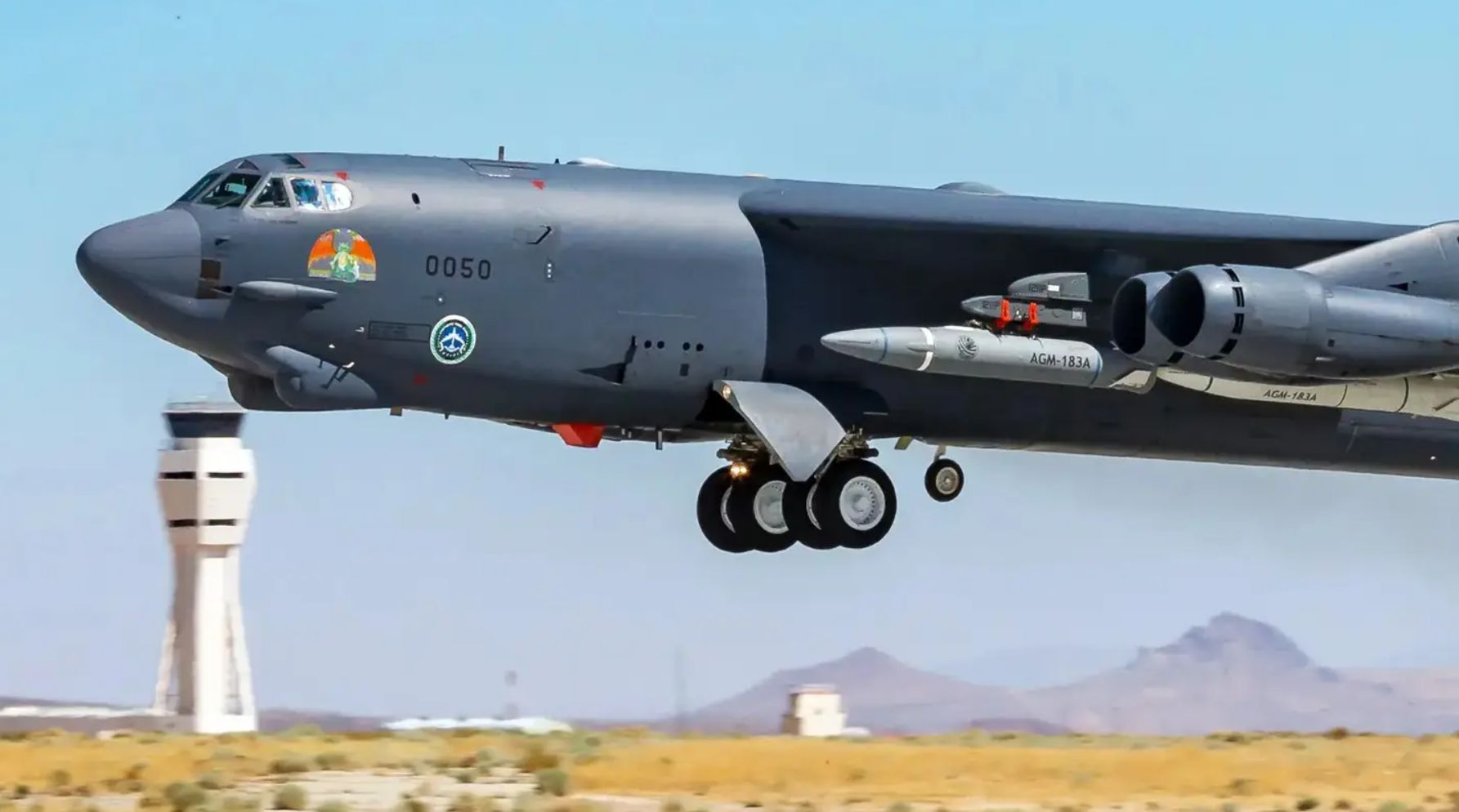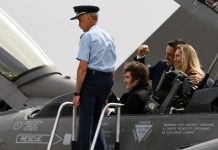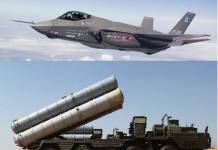The B-52 Stratofortress strategic bomber (big buff), infamous for being one of the most shot-down aircraft of the US Air Force (USAF) post World War era, averted another tragedy when a passenger aircraft made an aggressive maneuver to prevent a mid-air collision.
Last week, a Delta Air Lines aircraft had to make an abort landing in North Dakota to avoid colliding with a B-52 bomber, on approach to Minot, North Dakota. The pilot said that he had to make an “aggressive maneuver” to avoid the collision and apologized to the passengers upon landing.
“Given his speed … I don’t know how fast they were going, but they were a lot faster than us. I felt it was the safest thing to do to turn behind it,” the pilot was quoted as saying by ABC News, which cited a recording of their conversation. “So sorry about the aggressive maneuver, it caught me by surprise, this is not normal at all. I don’t know why they didn’t give us a heads up, because the Air Force base does have radar … long story short, it was not fun, but I do apologize for it, and thank you for understanding. Not a fun day at work.”
It is unknown how near the two aircraft were to one another or whether the pilots were alerted to a possible collision by a cockpit alarm. The Minot Airport in North Dakota is located about 18 kilometres south of a US Air Force base that hosts about 26 B-52 Stratofortress bombers.
SkyWest, the operator of Delta flight 3788, told Bloomberg that it was investigating the July 18 incident.
“SkyWest flight 3788, operating as Delta Connection from Minneapolis, Minnesota to Minot, North Dakota, landed safely in Minot after being cleared for approach by the tower but performed a go-around when another aircraft became visible in their flight path. We are investigating the incident,” said a spokesperson of the operator.
The USAF, on its part, acknowledged the reporting surrounding the incident but stopped short of giving specific details, only confirming that a flyover was indeed conducted by the B-52 on July 18.
According to Flightradar24 data, the Embraer SA E175 jet reached a height of roughly 2,200 feet (670 meters) just minutes before landing. It then quickly climbed to 4,150 feet and made a U-turn to try a second, successful landing.
Notably, the incident comes months after an American Eagle commercial plane and a Black Hawk helicopter collided in mid-air above the Potomac River near the airport, killing the 64 people aboard the jet and the three people aboard the helicopter in January 2025. The incident has put aviation security in the United States under enhanced scrutiny.
On Friday (Jul 18), a Delta Connection E175 had a near miss with a USAF B-52 on approach to Minot Airport (North Dakota, US). The airline pilot was forced to make an “aggressive maneuver” to avoid impact.
🎥 Video: @aviationbrk
📊 Flight data: https://t.co/hwU3Kdnd0bUpdates to… pic.twitter.com/gt2yotiUlP
— AirNav Radar (@AirNavRadar) July 20, 2025
Inducted into service in 1955, the B-52 is the USAF’s oldest flying combat aircraft and forms the backbone of the USAF’s strategic bomber fleet along with the B-1B Lancer and the B-2 Spirit.
The aircraft has been deployed extensively for bombing runs across battlefields, from Vietnam to Iraq and later to Yugoslavia and Afghanistan, and more recently to decimate the Islamic State terrorists.
Keeping up with the evolving security threats, the aircraft has also been deployed to the South China Sea, amid opposition from China. In October 2023, for instance, a Chinese J-11 fighter jet flew dangerously close to a US B-52 bomber over the South China Sea during a nighttime intercept, coming within an estimated 10 feet of the bomber and raising concerns of a collision.
Besides being the most senior aircraft in the USAF, the B-52 also has a reputation for being involved in the most combat actions and experiencing the most accidents in recent US history.
The first such incident occurred in 1956, just months after the B-52 entered service, and the latest incident took place in 2016. The EurAsian Times recounts some of the most notable incidents.

B-52: Notable Loses
The most B-52 losses came during the Vietnam War. In November 1972, a B-52D was hit by a North Vietnamese SA-2 surface-to-air missile while on a raid over Vinh, North Vietnam. The crew reportedly abandoned the aircraft over Thailand. This marked the first ever loss of the B-52 Stratofortress in the deadly war.
This incident was followed by the ‘Operation Linebaker II’, which led to the infamous Christmas Bombings that have been talked about in multiple past EurAsian Times reports.
The US lost about 15 B-52s, the flagship of its fleet, during the enormous bombardment of Vietnam in December 1972. Six of these Stratofortresses were shot down in one day alone.
By the war’s end, the S-75 surface-to-air missiles used by North Vietnamese forces had shot down several fighter jets and bombers. Moreover, as per some reports, several aircraft that were reported to have “crashed” were allegedly taken down by the S-75.

In addition to this, nine B-52s that returned to U-Tapao were too damaged to fly again, and five suffered medium damage. Thus, further compounding the number of B-52 casualties.
The North Vietnamese forces said that at least two B-52s were shot down by MiG-21s, but the US vehemently denied the claims, and the number was not accounted for.
Later, during the Gulf War in the 1990s, the US lost another B-52 when it was returning from a bombing run. According to reports from the time, the aircraft crashed into the Indian Ocean, about 21 kilometres north of the island of Diego Garcia, after encountering engine and electrical problems.
In a separate incident during this war, a B-52 tail was also hit in a case of friendly fire. Later, an Iraqi pilot said he was the one who damaged the B-52G with a Vympel R-27R missile from a MiG-29, but that could never be verified.
The aircraft has also seen a fair share of non-combat crashes. For instance, in April 1961, a New Mexico Air National Guard F-100A Super Sabre unintentionally shot down a B-52B from the 95th Bombardment Wing, Biggs AFB, Texas, while intercepting it during an exercise.
Later that year, B-52G from the 4241st Strategic Wing disappeared over the Atlantic Ocean off Newfoundland during a mock attack exercise on October 15, 1961. The whereabouts of the aircraft were never known, and the circumstances surrounding its disappearance from radar have yet to be determined.
On August 19, 1980, a ground fire on the ramp at Robins AFB, Georgia, destroyed a B-52G belonging to the 19th Bombardment Wing.
The USAF lost two aircraft in 1982—one was destroyed in November post-landing fire from the hydraulic system, and the other aircraft crashed upon takeoff in December.
On April 11, 1983, a 19th Bomb Wing B-52G from Robins AFB, Georgia, hit a mountainside 32 kilometres north of St George, Utah.
A B-52H crashed during a training mission at Fairchild AFB in June 1994. The crash was attributed to pilot error as Lt. Col. Arthur “Bud” Holland was known to have exceeded the aircraft’s flight envelope with a low-altitude, tight turn, causing a stall and crash.
One of the worst non-combat incidents involving the aircraft occurred in Guam in 2008. On 21 July, while on a flypast mission for the island’s Liberation Day parade, a B-52H, which was deployed from Barksdale AFB, Louisiana, to Andersen AFB, Guam, crashed about 40 kilometers northwest of Apra Harbour. The cause of the crash was later ascertained to be improper stabilizer trim settings.
In 2016, a B-52H from the 69th Expeditionary Bomb Squadron crashed during takeoff at Andersen Air Force Base in Guam due to an aborted takeoff caused by a bird strike. The aircraft could never be recovered.
The above is an incomplete list of accidents, with several such incidents reported between the timelines mentioned in this report, mostly due to technical malfunctions.
The latest incident involving the civilian aircraft is, thus, come as a relief for the B-52 and the USAF, particularly as fewer than 80 are believed to be operational at this point.
- Contact the author at sakshi.tiwari9555 (at) gmail.com
- Follow EurAsian Times on Google News




